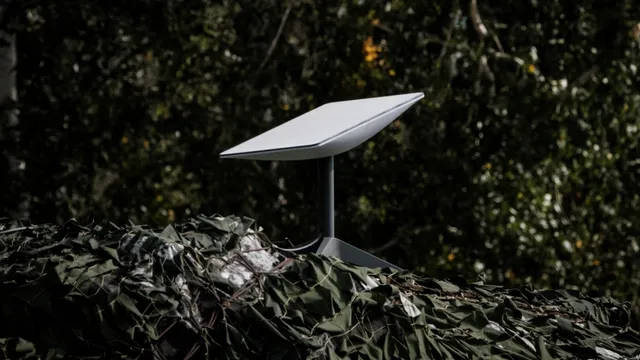
Starlink leads satellite market despite emerging global competition
2025-06-30 00:00- Starlink, founded by Elon Musk, has become a leading provider of satellite internet services.
- The company has attracted numerous users, especially in remote areas and during travel.
- As competition escalates from major players like the EU and China, Starlink's dominant position is under scrutiny.
Express your sentiment!
Insights
In recent developments, Starlink, a satellite internet service created by Elon Musk, has emerged as a prominent player in the satellite market, particularly in the United States. The popularity of Starlink has surged due to its broad availability that caters to users in hard-to-reach locations, such as those living in remote areas or traveling in recreational vehicles. By leveraging innovative satellite technology, Starlink has managed to establish a substantial lead in market share, providing high-speed internet access that many competitors struggle to match. This lead has raised questions about the potential of Starlink becoming a natural monopoly in the satellite internet sector. As competition from entities like the European Union and China intensifies, Starlink's unique position will be essential to monitor. Industry analysts are increasingly interested in whether Starlink can maintain its superiority and fend off challenges posed by Jeff Bezos and his initiatives in the space sector. The outcomes of this competition could significantly impact the future landscape of satellite internet services globally. Whether Starlink can adapt to new technological advances and regulatory hurdles remains a critical point of focus as the company seeks to solidify its role for years to come.
Contexts
The Starlink satellite internet service, developed by SpaceX, has rapidly become one of the leading providers in the satellite internet market since its beta launch in 2020. The service utilizes a constellation of low Earth orbit (LEO) satellites to offer high-speed internet access, especially in remote and rural areas where traditional internet infrastructure is limited or nonexistent. As of June 30, 2025, Starlink is facing increasing competition from various players in the satellite internet industry, each striving to establish a foothold in this growing market. Companies like OneWeb and Amazon's Project Kuiper are emerging as significant competitors, offering their own LEO satellite systems aimed at providing fast and reliable service to underserved communities globally. These competitors are not only accelerating the technological advancements in satellite broadband but are also striving to reduce costs and improve service reliability, thus intensifying the competitive landscape. OneWeb, with a focus on establishing global internet connectivity, has launched over 600 satellites as part of its plan to create a network capable of serving the entire planet. The company has ambitious goals, with an eventual plan to deploy 648 satellites, addressing both urban and rural service gaps. OneWeb's strategy includes partnerships with telecommunications operators to expand service reach and ensure competitive pricing. In addition to OneWeb, Amazon's Project Kuiper, though still in the early stages of deployment, aims to launch a constellation of 3,236 LEO satellites. The project has significant backing from Amazon and its vast resources, which may allow it to offer unique packages that combine satellite internet with other Amazon services, thus providing additional incentives for customers to choose their offering over Starlink. Noteworthy also are traditional telecom companies that are venturing into satellite internet services, merging terrestrial and satellite networks to provide comprehensive broadband access. For instance, companies like Telesat and HughesNet are reassessing their strategic positioning to adapt to new technologies and market demands. Telesat is focusing on its LEO satellite program designed to complement its existing geostationary services, while HughesNet continues to innovate within the geostationary orbit segment. These companies recognize the growing consumer demand for reliable internet connectivity and are investing in technology to enhance user experience and service delivery. The competition is set to grow as advancements in technology allow for more efficient and effective satellite systems. Overall, the evolution of the satellite internet market, spurred by the emergence of new competitors, is expected to enhance the quality of internet access across various demographics. While Starlink currently leads the pack in terms of subscribers and operational satellites, the competitive dynamic will likely result in benefits for consumers. As companies race to innovate and offer compelling services at competitive prices, the future landscape of satellite internet may become more diverse and accessible, ultimately driving down prices and improving internet service for millions around the globe.